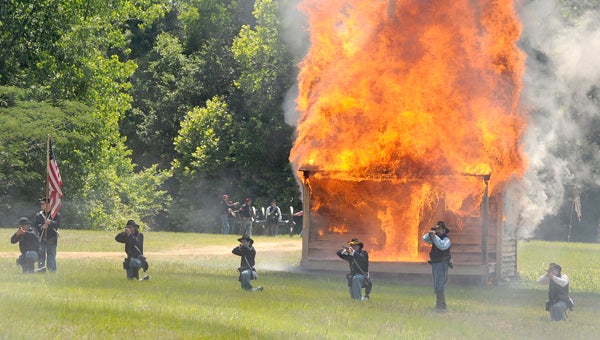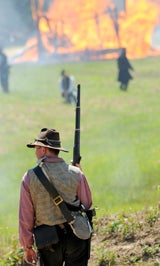Battle of Selma staple is built to burn
Published 12:34 pm Monday, April 1, 2013

Volunteers turned out Saturday to begin constructing the well-known burn house on the grounds of Riverside Park. The structure is burned during the finale of the annual Battle of Selma, which is planned for later this month.
Although it’s consumed with flames and turned into rubble in a matter of minutes, the construction of the burn house — a Battle of Selma must see — takes several weekends to construct.
 Benny Austin, along with several other volunteers, began sorting lumber early Saturday in preparation for the battle reenactment. Burning the small, wooden home, which will be located at Riverside Park, represents the burning of Selma by federal troops, Austin said.
Benny Austin, along with several other volunteers, began sorting lumber early Saturday in preparation for the battle reenactment. Burning the small, wooden home, which will be located at Riverside Park, represents the burning of Selma by federal troops, Austin said.
“After the Yankees came through during the Civil War, they burned a large portion of the downtown area,” Austin explained. “They couldn’t see well enough to cross the river so they began lighting fires on the riverbank.”
Setting fire to the burn house at the end of the reenactment, held Sunday, April 28, signifies the Union troops leaving Selma, Austin said.
And while the construction of the burn house is a laborious endeavor, Austin said the annual reenactment wouldn’t be the same without it.
“The burn house is one of those things that the spectators won’t let us do without,” Austin said with a laugh while sorting through lumber donated by Miller Lumber Company. “It’s gotten to the point where it takes a large portion of our time to build it and get it ready.”
While beginning the project, ashes could be seen in small piles throughout the park, representing the many years of reenactments.
Once erected, the burn house will be 16 square feet, Austin said, and resemble a small home that a family in the mid-1800’s could live in.
“It’s a challenge but we enjoy doing it,” Austin said. “It makes for a great event.”



